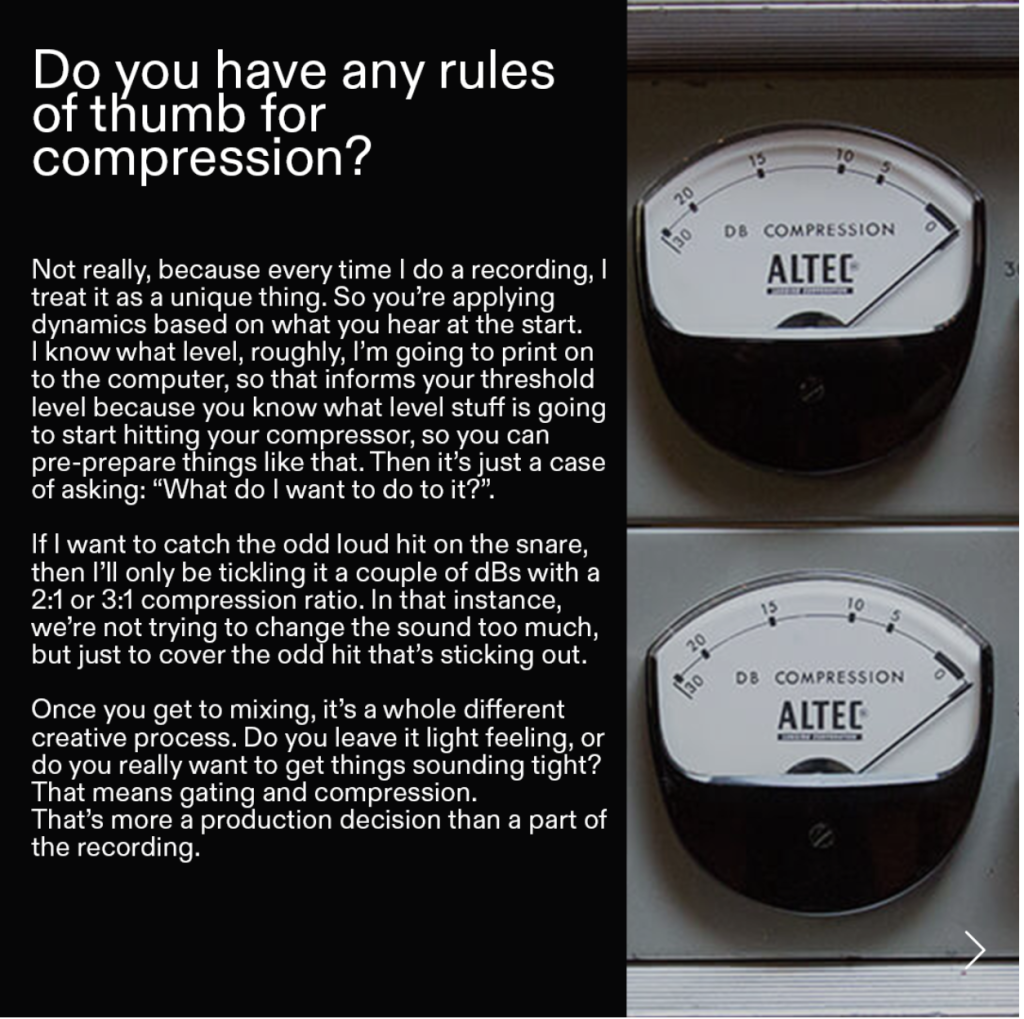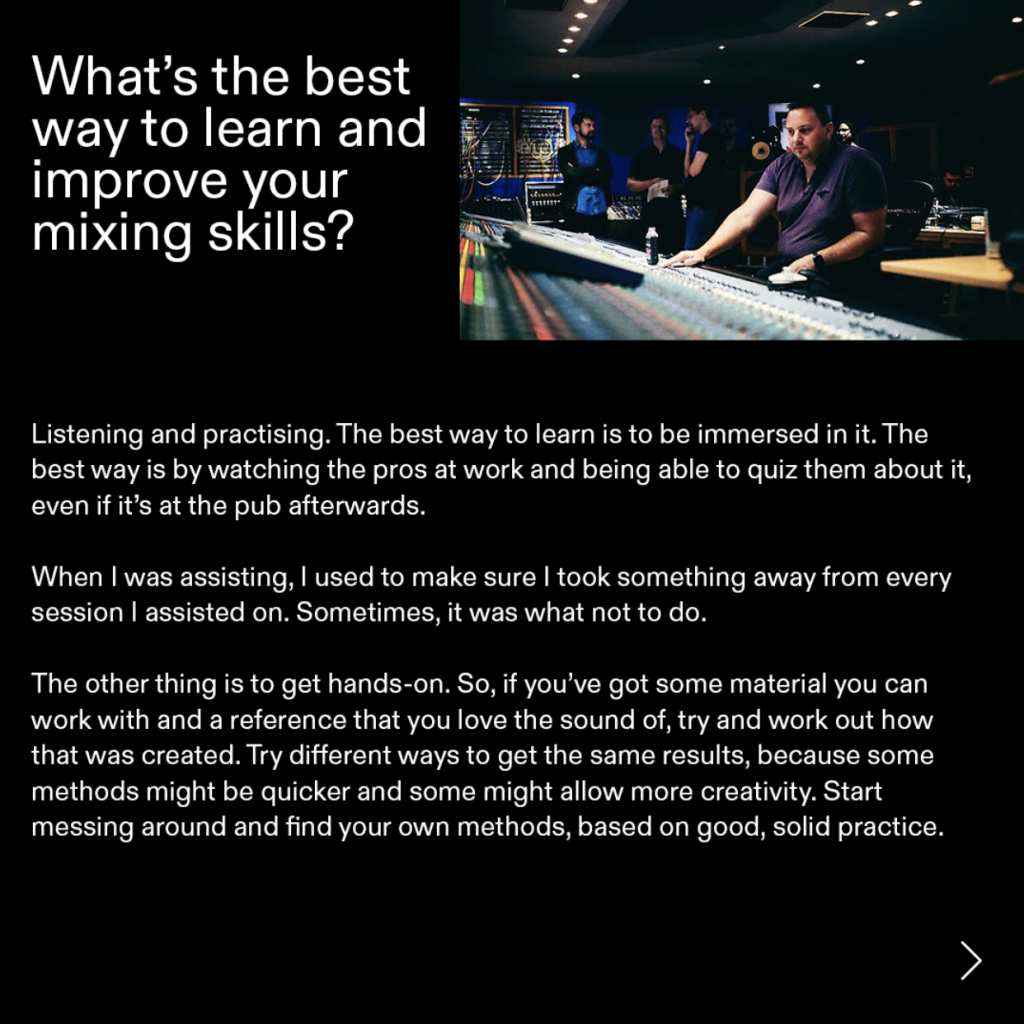Senior Recording Engineer Andrew Dudman has spent the past 23 years in the engineering team at Abbey Road and has become one of the most reputable film scoring engineers.
Andrew’s work on films such as Disney’s Brave and The Fellowship Of The Ring have earnt him CAS and MPSE awards, as well as picking up the Pro Sound News Award for 2014’s Engineer of the Year.
In our final recap of Abbey Road Studios’ and Music Tech’s ‘Ask Abbey Road’ series, Andrew shares his tips for improving your mixing skills, how he would record a live band and his rules of thumb for compression.

How would you typically record a live band composed of a drummer, singer/keyboardist and singer/electric guitarist?
Firstly, you find out the style and that would inform whether you went for musicians in the room together. If you think you’ll need to do any tuning or hardcore editing, you’d definitely need to use isolation. If you were going to be giving it to someone else to take on, then you record the band together with spill everywhere, you tie the mix engineer’s hands. Then, line of sight. It’s good to feel like you’re still playing in a band, even if you’re isolated. It pays to keep the musicians as close together as possible with good lines of sight or rely on cameras and screens doing that job for you. Once you’ve got that out of the way, then you get into mic choices. You probably go for more dynamics if everyone’s together in the room, just to give you a bit more control. If you’re isolated, you can choose what you like. You’ve got a blank page to put out your favourite mics, knowing they’re not going to be affected by spill from other instruments.

Do you have any rules of thumb for compression?
Not really, because every time I do a recording, I treat it as a unique thing. So you’re applying dynamics based on what you hear at the start. I know what level, roughly, I’m going to print on to the computer, so that informs your threshold level because you know what level stuff is going to start hitting your compressor, so you can pre-prepare things like that. Then it’s just a case of asking: “What do I want to do to it?”. If I want to catch the odd loud hit on the snare, then I’ll only be tickling it a couple of dBs with a 2:1 or 3:1 compression ratio. In that instance, we’re not trying to change the sound too much, but just to cover the odd hit that’s sticking out. Once you get to mixing, it’s a whole different creative process. Do you leave it light feeling, or do you really want to get things sounding tight? That means gating and compression. That’s more a production decision than a part of the recording.

What’s the best way to learn and improve your mixing skills?
Listening and practicing. The best way to learn is to be immersed in it. The best way is by watching the pros at work and being able to quiz them about it, even if it’s at the pub afterwards. When I was assisting, I used to make sure I took something away from every session I assisted on. Sometimes, it was what not to do. The other thing is to get hands-on. So, if you’ve got some material you can work with and a reference that you love the sound of, try and work out how that was created. Try different ways to get the same results, because some methods might be quicker and some might allow more creativity. Start messing around and find your own methods, based on good, solid practice.
